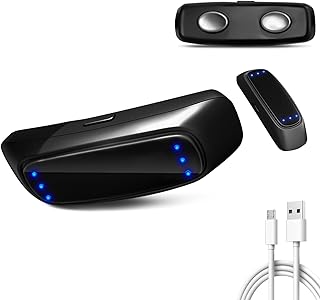Summary of "Light Breathing Exercise for Better Sleep | Buteyko Clinic Tutorial with Patrick McKeown"
Key Wellness Strategies and Techniques from the Video
The primary objective is to improve breathing patterns during the day to achieve lighter, slower breathing during sleep.
Benefits
- Helps with insomnia, snoring, and obstructive sleep apnea.
- Activates the body’s rest and digest (parasympathetic) response.
- Promotes slow wave sleep, which is essential for brain detoxification and waking up refreshed.
Common Issues Addressed
- Mouth breathing leads to upper chest breathing, causing harder, faster breaths and lighter sleep.
- Insomnia affects approximately 30% of the population; chronic insomnia affects 10%.
- Obstructive sleep apnea is prevalent, especially in older adults.
- Snoring is common and often linked to sleep apnea.
Breathing Exercise Methodology (Buteyko Breathing Light Exercise)
Setup
- Place one hand on the chest and one hand just above the navel.
- Allow shoulders to drop and relax.
- Use gentle pressure with hands on chest and tummy as feedback to reduce breath volume.
Breathing Technique
- Tune into your breathing pattern.
- Breathe softly and slowly through the nose.
- Focus on gentle, relaxed exhalations and very soft, slow inhalations.
- Aim for “breathing light” — air intake should be almost imperceptible.
- Avoid holding the breath; instead, slow and soften the breath naturally.
- Allow the sensation of mild air hunger (a slight urge to breathe more) to develop without discomfort.
Managing Challenges
- If breathing becomes unstable or too fast, take a 30-second rest with normal breathing.
- Practice patience and perseverance; it may take several attempts to get comfortable.
- Avoid deliberate interference with breathing muscles; let the hands guide breath volume.
Additional Tips
- Practice relaxation throughout the body during the exercise.
- Monitor for signs of relaxation such as increased saliva (indicating activation of the rest and digest response).
- The exercise may induce sleepiness, which is a positive sign.
- Ensure breathing is done through the nose, not the mouth.
- Use the exercise before sleep to prepare the brain by signaling safety and readiness for rest.
Physiological Rationale
- Strong chemosensitivity to carbon dioxide causes harder, faster breathing.
- Harder, faster breathing increases airway turbulence and negative pressure, worsening sleep apnea.
- Reducing chemosensitivity through lighter, slower breathing stabilizes breathing during sleep.
- Improved biochemical breathing leads to less turbulence in nasal and throat airways, reducing snoring and sleep apnea risk.
Presenters / Sources
- Patrick McKeown (Buteyko Clinic)
- Root (demonstrator in the tutorial)
Category
Wellness and Self-Improvement
Share this summary
Featured Products

The Breathing Cure for Better Sleep: 7 Days to Quality Sleep Using the Buteyko Method
View on Amazon

Anti Snoring Devices(8 Pack), Silicone Magnetic Stop Snoring Solution, Comfortable & Professional Anti Snoring Nose Clip for Men and Women 5.6 Inch
View on Amazon

Anti Snoring Devices, Pulse Feedback, Snore Stopper Chin Mounted, 6 Adjustable Modes, Portable Snoring Relief for Home Travel
View on Amazon

Hyland's Calms Forte Tablets, Natural Relief of Nervous Tension and Occasional Sleeplessness, 100 Count
View on Amazon

Yoga for Every Body: A beginner’s guide to the practice of yoga postures, breathing exercises and meditation
View on Amazon